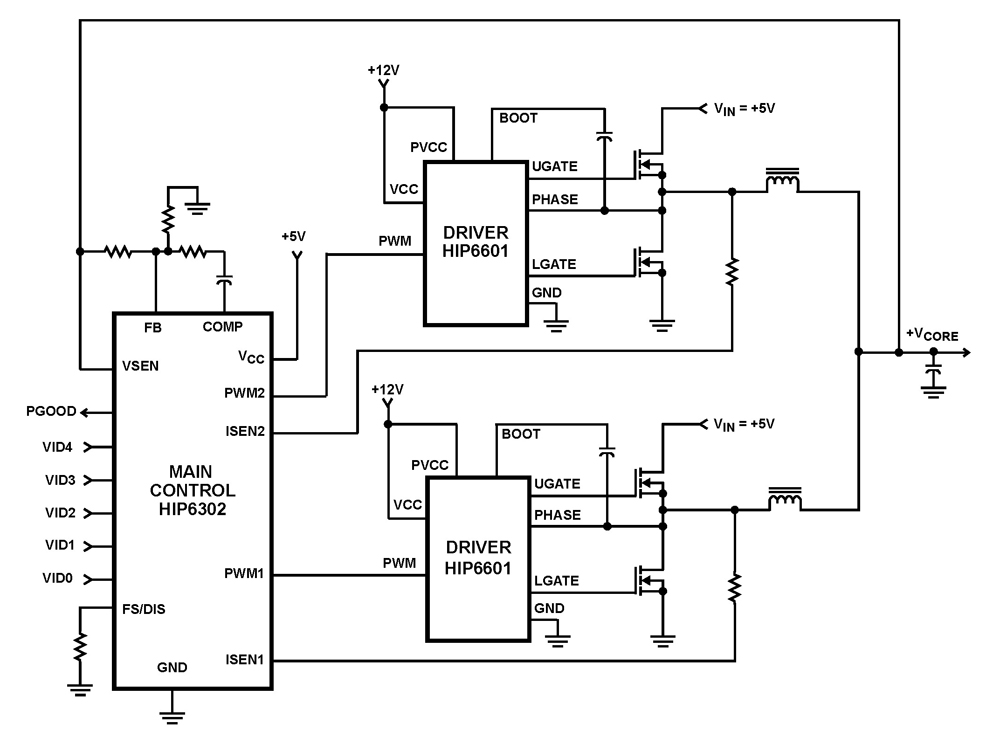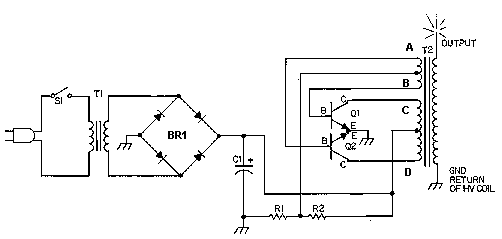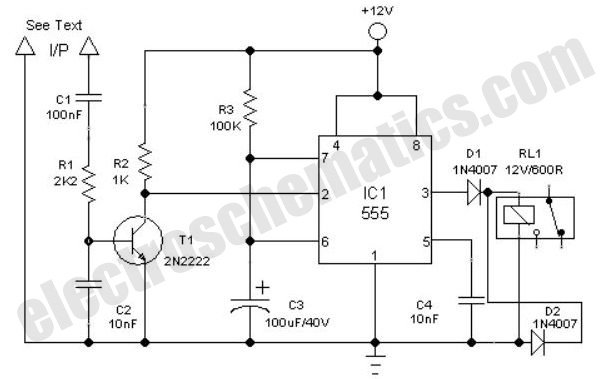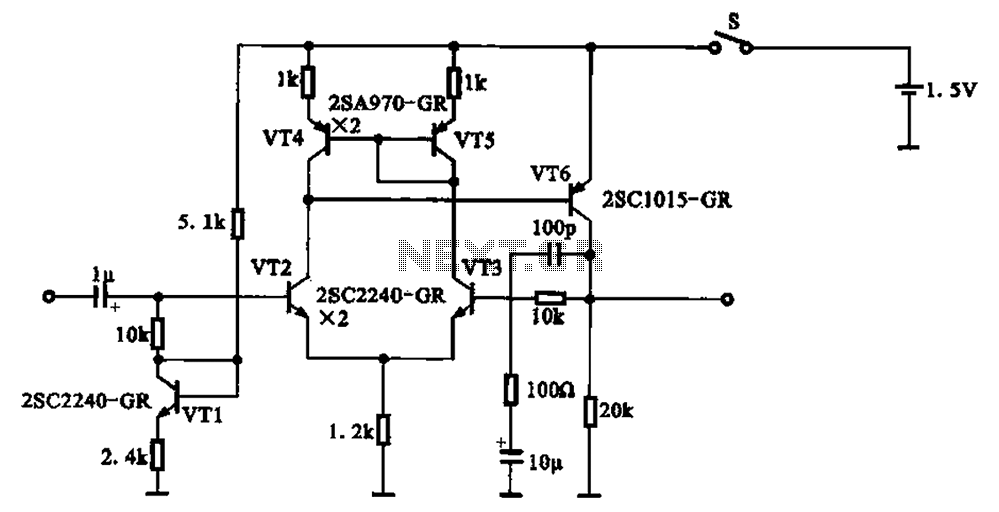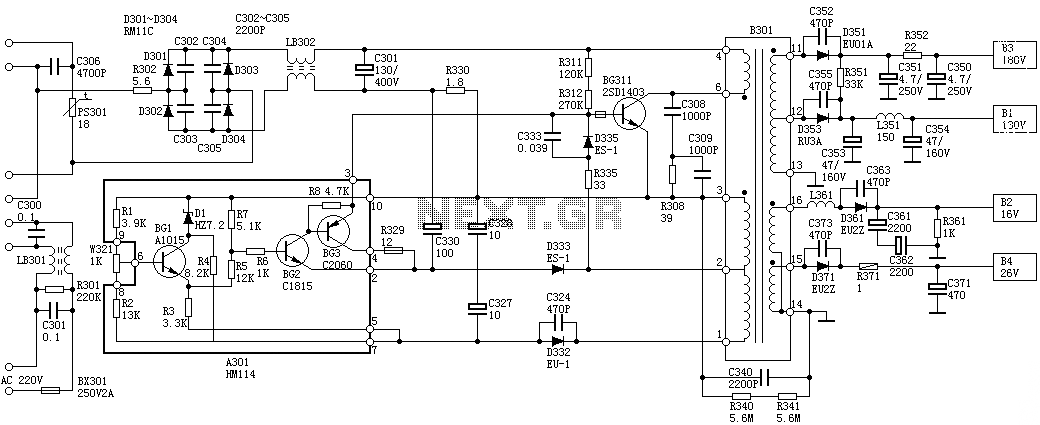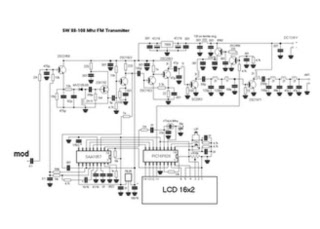
16-channel remote control circuit schematic (T998C)
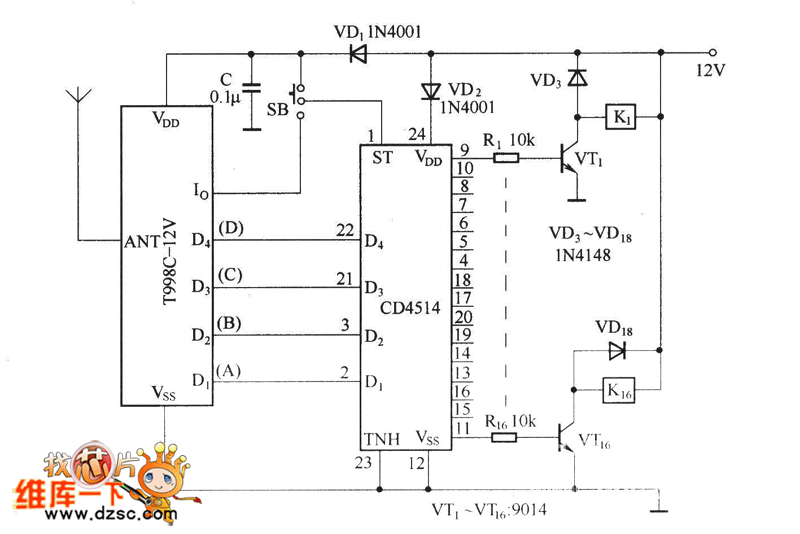
The circuit functions as both a latch output and a non-latched output. The control switch, labeled SB, governs the operation. When both SB and VDD are activated, the circuit enters the latch output state, allowing the sixteen output terminals to be influenced by the Io output state. Conversely, when SB is connected to the Io output terminals, the circuit operates in a non-latched output state, where the output states are determined by the Io signal.
The circuit design incorporates a dual-functionality mechanism, enabling it to switch between latch and non-latch output modes based on the state of the control switch (SB) and the supply voltage (VDD). In the latch output state, the circuit retains the last output state even after the control signals are removed, making it suitable for applications requiring memory or state retention.
When the SB switch is closed, and VDD is supplied, the circuit enters a stable latch state. The sixteen output terminals are then capable of reflecting the Io output state, which can be derived from various input signals or conditions within the circuit. This configuration is particularly useful in digital applications where specific states need to be held until explicitly changed.
In the non-latched output state, achieved by connecting SB directly to the Io output terminals, the outputs are dynamically controlled. This mode allows for real-time response to input changes, making it ideal for applications such as signal routing or multiplexing, where immediate output changes are necessary without retaining previous states.
Overall, the design of this circuit offers versatility in electronic applications, allowing for both temporary and permanent output states, thereby enhancing functionality in various digital systems. The careful selection of components and the arrangement within the schematic ensure reliable operation across both modes.The circuit is not only used for the latch output, but also for non - latched output, SB is control switch. When SB and VDD are turned on, it is in the latch output state, then the sixteen output ends are out control of Io output state; when SB and Io output ends are connected, it is in non- latched output state, then the output states are under control of I..
🔗 External reference
The circuit design incorporates a dual-functionality mechanism, enabling it to switch between latch and non-latch output modes based on the state of the control switch (SB) and the supply voltage (VDD). In the latch output state, the circuit retains the last output state even after the control signals are removed, making it suitable for applications requiring memory or state retention.
When the SB switch is closed, and VDD is supplied, the circuit enters a stable latch state. The sixteen output terminals are then capable of reflecting the Io output state, which can be derived from various input signals or conditions within the circuit. This configuration is particularly useful in digital applications where specific states need to be held until explicitly changed.
In the non-latched output state, achieved by connecting SB directly to the Io output terminals, the outputs are dynamically controlled. This mode allows for real-time response to input changes, making it ideal for applications such as signal routing or multiplexing, where immediate output changes are necessary without retaining previous states.
Overall, the design of this circuit offers versatility in electronic applications, allowing for both temporary and permanent output states, thereby enhancing functionality in various digital systems. The careful selection of components and the arrangement within the schematic ensure reliable operation across both modes.The circuit is not only used for the latch output, but also for non - latched output, SB is control switch. When SB and VDD are turned on, it is in the latch output state, then the sixteen output ends are out control of Io output state; when SB and Io output ends are connected, it is in non- latched output state, then the output states are under control of I..
🔗 External reference
